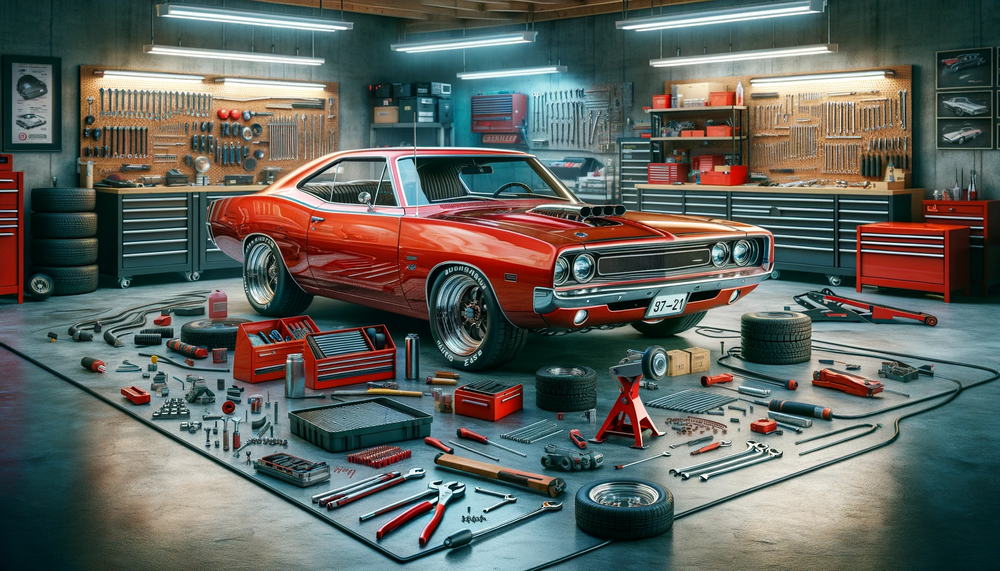Mastering Sound Deadening in Vintage Car Restorations: The Ultimate Guide
Restoring a vintage car is a true labor of love, combining passion, skill, and meticulous attention to detail. As you breathe new life into your classic automobile, you aspire to keep it as authentic as possible, carefully preserving appearance and performance. However, vintage cars were built before advancements that have led to quieter, smoother rides in modern vehicles, and they could benefit from an enhanced acoustic experience. In these cases, incorporating sound deadening solutions during restoration can significantly improve your classic car's comfort without compromising its heritage or authenticity.
In this comprehensive guide, we focus on the delicate and rewarding process of integrating sound deadening techniques into vintage car restorations. Our mission is to help you maintain your collectible car's unique character while dramatically improving its interior acoustics, ensuring the perfect balance of historical value and modern comfort. From identifying problem areas to selecting subtle, top-quality soundproofing materials, we will offer you specialized guidance tailored to the singular world of vintage automobiles.
As fellow automotive enthusiasts with a profound appreciation for classic cars, we understand the importance of respecting their historical integrity. Join us on this exciting journey through the intersection of historical preservation and modern acoustic technology, and discover the full potential of your vintage car restoration project.
Identifying Noise Issues in Vintage Cars
The first step in soundproofing a vintage car is pinpointing the primary sources of noise. By recognizing these problem areas, you can develop targeted solutions that will be most effective in reducing unwanted sounds. Common noise sources in vintage cars include:
- Engine Noise
Older engines tend to produce more noise compared to their modern counterparts. As a result, engine rumble can often be heard inside your vintage car when idling or accelerating.
- Road Noise
Vintage cars usually feature few, if any, of the comfort-enhancing insulation present in modern vehicles. This lack of insulation often results in increased road noise – a common issue that many classic car enthusiasts seek to address.
- Wind Noise
Wind noise is caused by air rushing around the cabin and can be exacerbated by old or deteriorating weatherstripping around windows and doors.
- Vibration and Panel Rattle
Over time, vintage car panels and components may become loose or worn, leading to vibrations and rattles that transfer noise into the cabin.
Sound Deadening Materials Suitable for Vintage Cars
After identifying specific noise sources in your vintage car, the next step is selecting appropriate sound deadening materials. As classic car restorations require an emphasis on authenticity, opt for materials that can minimize noise while still maintaining the period-correct appearance. Some sound deadening materials well-suited for vintage cars include:
- Sound Absorbing Materials
Materials such as jute padding and mass-loaded vinyl (MLV) can be used to block and absorb sound waves. They can be applied to floors, walls, and even engine compartments while still staying hidden from view.
- Vibration Damping Materials
Vibration damping materials, like butyl rubber sheets, can reduce resonance in the car's panels, offering a quieter ride. As these materials are often hidden behind interior panels, they provide a discreet solution without compromising the vintage look of your car.
- Weatherstripping
Replacing old or worn weatherstripping is an effective way to reduce wind noise and keep the appearance of your vintage car true to its original state.
Sound Deadening Techniques for Vintage Car Restoration
With the right materials in hand, you can start to apply sound deadening techniques that will reduce noise and enhance ride quality without detracting from your vintage car's authenticity.
- Addressing Floor Noise
To reduce road noise in your vintage car, begin by focusing on the floor. Apply sound-absorbing material, such as jute padding or MLV, beneath the existing carpet or floor coverings. Additionally, placing vibration damping material on large metal surfaces (e.g., floor pans) can help address resonance and vibration noise.
- Restoring Door Panels and Seals
To tackle wind noise and panel vibrations, apply a layer of vibration damping material to the inner door panel. Next, consider adding a period-appropriate sound-absorbing barrier behind the panel to further reduce external noise. Finally, replace or supplement existing weatherstripping around doors and windows to create a secure seal against wind noise.
- Treating Engine Compartment and Firewall
Minimizing engine noise is crucial for the overall comfort of your vintage car. Begin by applying sound-absorbing material, such as thick MLV, to the engine firewall and surrounding surfaces. This layer should be concealed beneath existing coverings to preserve the vehicle's appearance. Additionally, ensure that the engine and any related components are well-maintained and in solid working condition, as this can also significantly impact noise levels.
- Ceiling and Trunk Treatments
Although the ceiling and trunk area of your vintage car may not be primary noise sources, they can still benefit from sound deadening treatments. Apply sound-absorbing materials to the roof and trunk lid, taking care to maintain a consistent look with the rest of the interior.
Balancing Authenticity and Modern Comfort
When applying sound deadening solutions to vintage car interiors, it is essential to balance the need for authenticity with the benefits of modern materials and technologies. Prioritize materials and techniques that can improve acoustics while remaining hidden or maintaining a period-correct appearance.
Conclusion
By integrating sound deadening materials and techniques in your vintage car restoration, you can significantly enhance your driving experience while preserving the essence of your beloved classic automobile. These thoughtful improvements will not only reduce unwanted noise but also elevate the overall enjoyment and value of your collectible car. Are you eager to dive into the world of vintage car sound deadening? Explore B-Quiet’s range of top-quality sound deadening material and discover how we can help you restore your classic vehicle with the perfect blend of historical authenticity and modern comfort.













